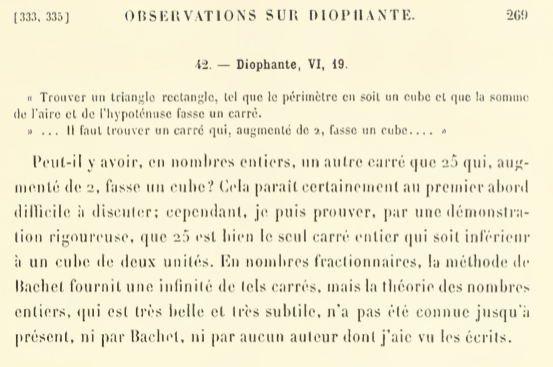Fermat's proof for $x^3-y^2=2$
Fermat never gave a proof, only announced he had one (sounds familiar?). Euler did give a proof, which was flawed, see Franz Lemmermeyer's lecture notes, or see page 4 of David Cox's introduction.
For a discussion why a proof along the lines set out by Fermat is unlikely to work, see this MO posting.
---- trivia ----
As a curiosity, I looked up Fermat's original text (reproduced below from his collected works), written in the margin of the Arithmetica of Diophantus:
Can one find in whole numbers a square different from 25 that, when increased by 2, becomes a cube? This would seem at first to be difficult to discuss; and yet, I can proof by a rigorous demonstration that 25 is the only integer square that is less than a cube by two units. For rationals, the method of Bachet would provide an infinity of such squares, but the theory of integer numbers, which is very beautiful and subtle, was not known previously, neither by Bachet, nor by any author whose work I have read.

Fermat did not prove this result; he claimed that the only solution is the obvious one and conjectured (in words that seem to suggest he knew how to prove it, but without explicitly saying so) that this can be proved by descent. I am sure that Fermat, if he really believed to have a proof (in my opinion he did not), was mistaken.
I am not aware of any proofs based on Fermat's techniques alone, and I have often tried to find one myself - so far without success.
A completely elementary proof can be found on page 561 of the Nov 2012 edition of The Mathematical Gazette, where a descent mechanism first used by Stan Dolan in the March 2012 edition is adapted (as per his challenge to the “interested reader”) to solve both of Fermat’s “elliptic curve” theorems. The method uses math which was clearly available in Fermat’s time, and in particular to Fermat himself.
I personally believe this finally puts to rest any questions of whether Fermat could have had a proof of these two claims.